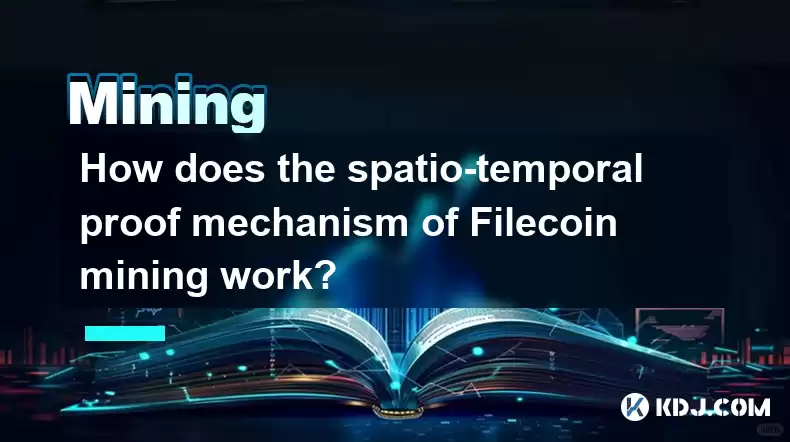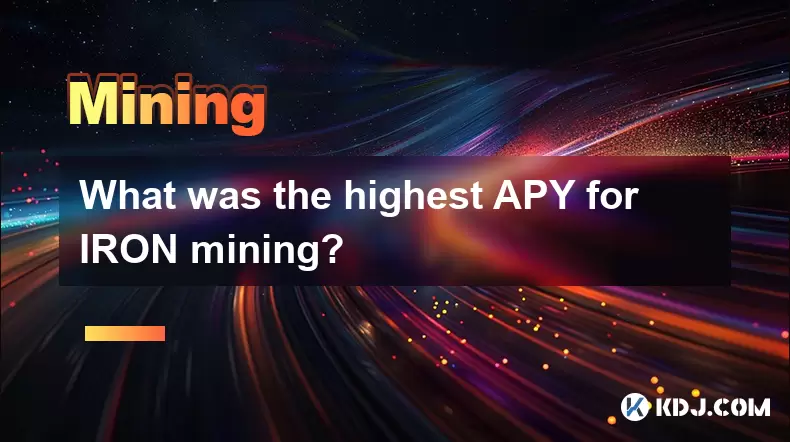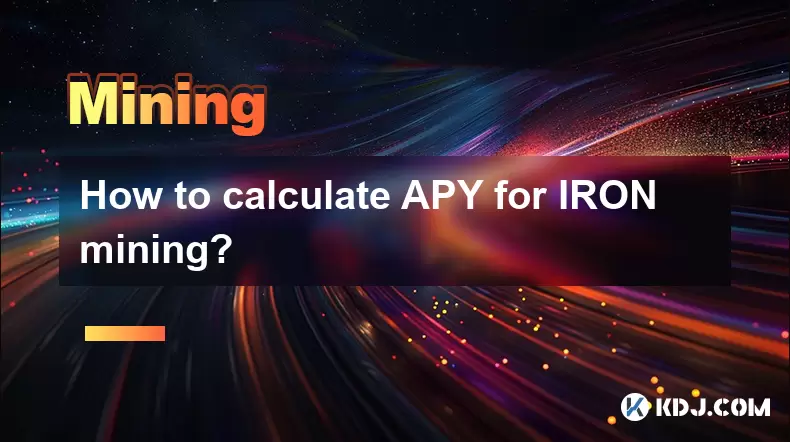-
 Bitcoin
Bitcoin $114400
0.68% -
 Ethereum
Ethereum $3550
2.48% -
 XRP
XRP $3.001
4.99% -
 Tether USDt
Tether USDt $0.9999
0.01% -
 BNB
BNB $757.6
1.46% -
 Solana
Solana $162.9
1.07% -
 USDC
USDC $0.9998
0.00% -
 TRON
TRON $0.3294
0.91% -
 Dogecoin
Dogecoin $0.2015
2.46% -
 Cardano
Cardano $0.7379
2.01% -
 Stellar
Stellar $0.4141
8.83% -
 Hyperliquid
Hyperliquid $37.83
-1.91% -
 Sui
Sui $3.454
0.76% -
 Chainlink
Chainlink $16.62
3.53% -
 Bitcoin Cash
Bitcoin Cash $554.6
2.84% -
 Hedera
Hedera $0.2486
3.91% -
 Ethena USDe
Ethena USDe $1.001
0.00% -
 Avalanche
Avalanche $21.95
3.34% -
 Toncoin
Toncoin $3.563
-2.85% -
 Litecoin
Litecoin $112.7
2.65% -
 UNUS SED LEO
UNUS SED LEO $8.977
0.13% -
 Shiba Inu
Shiba Inu $0.00001232
1.85% -
 Uniswap
Uniswap $9.319
2.93% -
 Polkadot
Polkadot $3.632
1.38% -
 Monero
Monero $307.2
2.36% -
 Dai
Dai $0.9997
-0.03% -
 Bitget Token
Bitget Token $4.340
0.91% -
 Pepe
Pepe $0.00001048
1.07% -
 Cronos
Cronos $0.1348
3.26% -
 Aave
Aave $261.5
1.93%
How does the spatio-temporal proof mechanism of Filecoin mining work?
Filecoin's spatio-temporal proof (STP) uses cryptography to continuously verify data storage by miners, employing computationally intensive challenges and cryptographic proofs linked to data sectors to prevent cheating and ensure data integrity and availability over time.
Mar 06, 2025 at 08:30 am

Key Points:
- Filecoin's spatio-temporal proof (STP) mechanism verifies that a miner is continuously storing data over time.
- STP leverages cryptographic techniques to ensure data integrity and availability without relying on constant verification.
- The process involves creating and verifying cryptographic proofs linked to specific sectors of stored data.
- Challenges from the network ensure miners are actively storing data, and not just claiming to do so.
- The mechanism is designed to be computationally intensive, making it difficult to cheat the system.
How Does the Spatio-Temporal Proof Mechanism of Filecoin Mining Work?
Filecoin's success hinges on its ability to incentivize the reliable storage and retrieval of data. Central to this is the spatio-temporal proof (STP) mechanism, a sophisticated cryptographic system that ensures miners are genuinely storing client data over extended periods. Unlike simple proofs of storage, STP continuously verifies the ongoing availability of the data, mitigating the risk of miners deleting data after receiving payment.
The core idea behind STP revolves around the concept of sectors. Miners divide the data they receive into sectors, which are essentially large, encrypted chunks of information. These sectors are then sealed using cryptographic techniques, creating a unique cryptographic commitment to the data's contents. This commitment acts as a digital fingerprint, impossible to alter without detection.
To prove that a sector is still stored, miners don't need to reveal the actual data. Instead, they generate a proof of spacetime (PoSt). This proof mathematically demonstrates the continued existence of the sealed sector without disclosing its contents. The process is computationally intensive, requiring significant storage capacity and processing power. This inherent cost helps deter malicious actors.
The creation of a PoSt involves several complex cryptographic operations. The miner uses a cryptographic hash function to generate a series of unique values based on the sector's contents and a random challenge. This challenge is crucial, as it prevents miners from pre-computing proofs and submitting them without actually storing the data.
The network regularly issues challenges to miners, demanding PoSts for randomly selected sectors. This ensures that miners are actively maintaining their storage commitments. The frequency and nature of these challenges are designed to make it highly improbable that a miner can successfully cheat the system by only storing a fraction of their committed data.
The verification process involves the network validating the PoSt submitted by the miner. This validation ensures the proof's integrity and confirms that the data remains stored. The network's consensus mechanism ensures that faulty or fraudulent proofs are rejected, maintaining the integrity of the entire system. The complexity of the cryptographic operations makes forging a valid PoSt extremely difficult.
The strength of the STP mechanism relies on the cryptographic hardness of specific functions, making it computationally infeasible for miners to cheat without significant investment in resources and time. The combination of sector sealing, random challenges, and computationally intensive proof generation creates a robust system for ensuring data integrity and availability.
Filecoin’s STP is not a static system; it’s constantly evolving. The protocol developers are continually working to improve its robustness and efficiency, adapting to new threats and optimizing its performance. This ongoing development is critical to maintaining the trust and reliability of the network.
Generating and Verifying a Proof:
The generation and verification of a PoSt involves several steps:
- Sector Creation: The miner divides the data into sectors and seals them using cryptographic techniques.
- Challenge Generation: The Filecoin network generates random challenges for specific sectors.
- Proof Generation: The miner generates a PoSt for the challenged sector, proving its continued existence.
- Proof Submission: The miner submits the PoSt to the network for verification.
- Proof Verification: The network verifies the PoSt using cryptographic techniques, confirming data integrity.
Common Questions:
Q: What happens if a miner fails to provide a valid PoSt when challenged?
A: Failure to provide a valid PoSt results in penalties, potentially including a reduction in reputation score or even expulsion from the network. This discourages miners from attempting to cheat the system.
Q: How often are miners challenged to provide PoSts?
A: The frequency of challenges varies and is adjusted based on network parameters. The goal is to strike a balance between ensuring data integrity and minimizing the computational burden on miners.
Q: How does Filecoin ensure the data is not altered during storage?
A: The cryptographic sealing and the PoSt mechanism work together to ensure data integrity. Any alteration of the data will result in an invalid PoSt, which will be rejected by the network.
Q: Is the STP mechanism vulnerable to quantum computing attacks?
A: Like many cryptographic systems, Filecoin's STP mechanism is theoretically vulnerable to sufficiently advanced quantum computers. The Filecoin community is actively researching post-quantum cryptography solutions to address this potential future threat.
Q: How does Filecoin's STP compare to other storage solutions' proof mechanisms?
A: Filecoin's STP offers a more robust and continuous verification method compared to simpler proof-of-storage mechanisms, providing a higher degree of assurance regarding data availability over time. Other systems might focus on periodic checks rather than the continuous monitoring offered by Filecoin's STP.
Disclaimer:info@kdj.com
The information provided is not trading advice. kdj.com does not assume any responsibility for any investments made based on the information provided in this article. Cryptocurrencies are highly volatile and it is highly recommended that you invest with caution after thorough research!
If you believe that the content used on this website infringes your copyright, please contact us immediately (info@kdj.com) and we will delete it promptly.
- Cryptocurrency, Altcoins, and Profit Potential: Navigating the Wild West
- 2025-08-04 14:50:11
- Blue Gold & Crypto: Investing Disruption in Precious Metals
- 2025-08-04 14:30:11
- Japan, Metaplanet, and Bitcoin Acquisition: A New Era of Corporate Treasury?
- 2025-08-04 14:30:11
- Coinbase's Buy Rating & Bitcoin's Bold Future: A Canaccord Genuity Perspective
- 2025-08-04 14:50:11
- Coinbase's Buy Rating Maintained by Rosenblatt Securities: A Deep Dive
- 2025-08-04 14:55:11
- Cryptos, Strategic Choices, High Returns: Navigating the Meme Coin Mania
- 2025-08-04 14:55:11
Related knowledge

What was the highest APY for IRON mining?
Jul 23,2025 at 05:14am
Understanding IRON Token and Its Mining MechanismThe IRON token is a stablecoin that operates within the Iron Finance ecosystem, primarily on blockcha...

What is impermanent loss in IRON pools?
Jul 23,2025 at 09:00am
Understanding Impermanent Loss in the Context of IRON PoolsImpermanent loss is a phenomenon that affects liquidity providers in decentralized finance ...

How to claim rewards from IRON mining?
Jul 23,2025 at 02:21pm
Understanding IRON Mining and Reward MechanismsIRON Finance operated as a decentralized finance (DeFi) protocol on the Polygon and Binance Smart Chain...

How to claim rewards from IRON mining?
Jul 29,2025 at 05:07am
Understanding IRON Mining and Reward MechanismIRON is a dual-token system designed to stabilize the value of a synthetic asset through a combination o...

IRON mining tutorial for beginners
Jul 27,2025 at 12:01am
What Is IRON and How Does It Work in the Cryptocurrency Ecosystem?IRON is a cryptocurrency token that operates on the Binance Smart Chain (BSC) and is...

How to calculate APY for IRON mining?
Jul 28,2025 at 09:49am
Understanding APY in the Context of IRON Token MiningWhen engaging in IRON token mining within decentralized finance (DeFi) platforms, Annual Percenta...

What was the highest APY for IRON mining?
Jul 23,2025 at 05:14am
Understanding IRON Token and Its Mining MechanismThe IRON token is a stablecoin that operates within the Iron Finance ecosystem, primarily on blockcha...

What is impermanent loss in IRON pools?
Jul 23,2025 at 09:00am
Understanding Impermanent Loss in the Context of IRON PoolsImpermanent loss is a phenomenon that affects liquidity providers in decentralized finance ...

How to claim rewards from IRON mining?
Jul 23,2025 at 02:21pm
Understanding IRON Mining and Reward MechanismsIRON Finance operated as a decentralized finance (DeFi) protocol on the Polygon and Binance Smart Chain...

How to claim rewards from IRON mining?
Jul 29,2025 at 05:07am
Understanding IRON Mining and Reward MechanismIRON is a dual-token system designed to stabilize the value of a synthetic asset through a combination o...

IRON mining tutorial for beginners
Jul 27,2025 at 12:01am
What Is IRON and How Does It Work in the Cryptocurrency Ecosystem?IRON is a cryptocurrency token that operates on the Binance Smart Chain (BSC) and is...

How to calculate APY for IRON mining?
Jul 28,2025 at 09:49am
Understanding APY in the Context of IRON Token MiningWhen engaging in IRON token mining within decentralized finance (DeFi) platforms, Annual Percenta...
See all articles

























































































